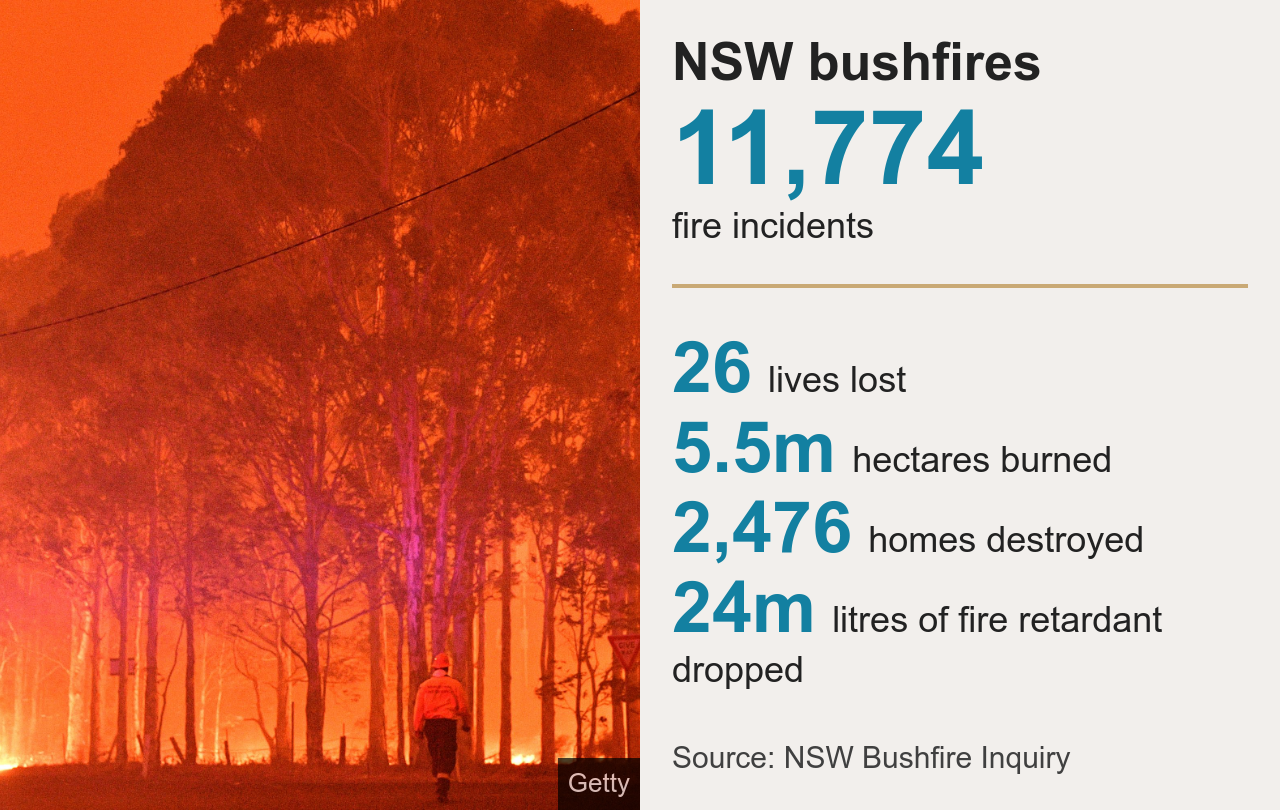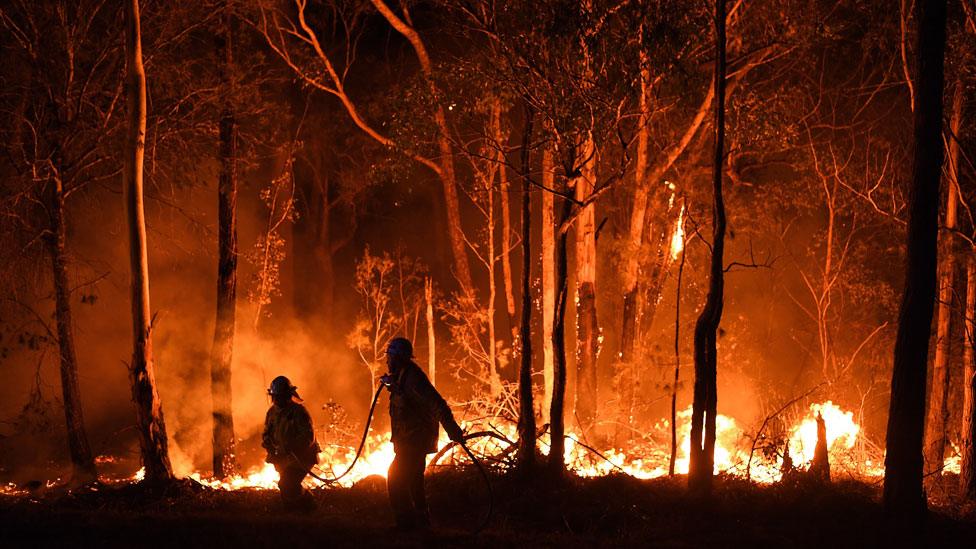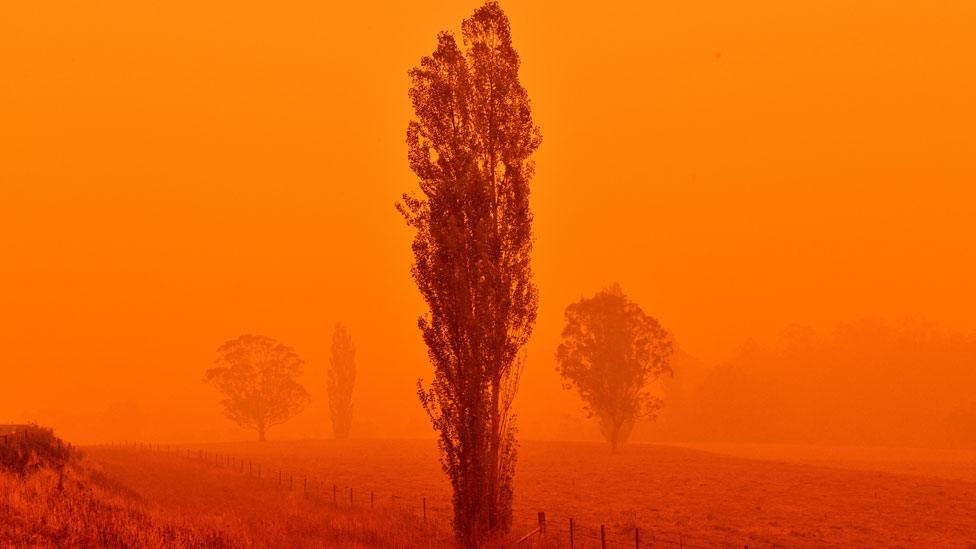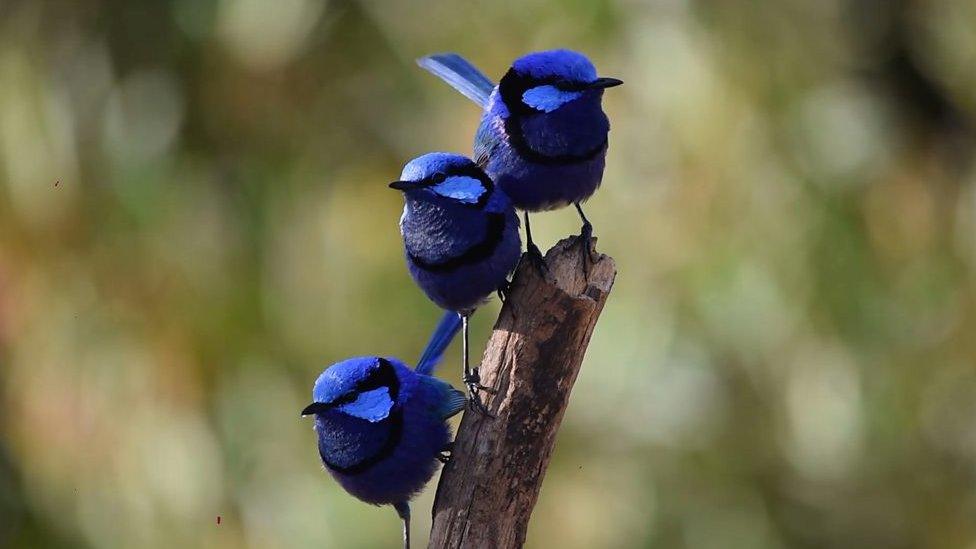Australia fires: Similar or worse disasters 'will happen again'
- Published

The 2019-20 bushfires killed 26 people in New South Wales
An inquiry into the recent massive bushfire disaster in Australia has found the country should expect "worse" in the years to come.
The review - which looked at New South Wales (NSW), the worst-hit state - made sweeping proposals aimed at better preparing for future fire seasons.
The blazes began last August and burned for months, killing 33 people nationally and scorching vast areas.
The NSW state government said it would adopt the inquiry's 76 recommendations.
The "extreme and extremely unusual" bushfires destroyed 2,476 houses and 5.5 million hectares of land in that state alone, according to the NSW Bushfire Inquiry report, external.
"It showed us bushfires through forested regions on a scale that we have not seen in Australia in recorded history, and fire behaviour that took even experienced firefighters by surprise."
The main causes were a drought which had made the land extremely dry and ready to burn, hot and windy weather, and climate change.
NSW Premier Gladys Berejiklian said on Tuesday: "The next fire season is already upon us."
As deadly fires rage in the US summer in California, NSW has seen winter blazes, external this month - though none have posed a significant threat.
What did the report recommend?
It made far-reaching proposals, including:
ordering residents in at-risk areas to conduct compulsory land-clearing
better aerial firefighting strategies, including more water-bombing at night
drawing on more Aboriginal land management techniques, such as cultural burning
allowing firefighters to enter private properties to start controlled burns on materials which fuel fires
improving alert systems for bushfire smoke, and research into its health impacts
making government agencies more efficient and auditing their progress.
Ms Berejiklian said: "We have to accept also that our climate is changing and those who wrote the report acknowledge that."

The report also noted an alarming rise in fire-generated storms - the most dangerous type of blaze. Of the 90 recorded since the early 1980s, a third took place in the past year.
Overall, most bushfires were caused by lightning strikes and embers from other blazes.
There were just 11 instances of people deliberately attempting to light bushfires, reinforcing that arson was wrongly overstated by some people as a significant cause of the crisis.
It added that this year's season was unlikely to be as severe.
- Published24 February 2020

- Published31 January 2020

- Published28 July 2020

- Published7 August 2020
